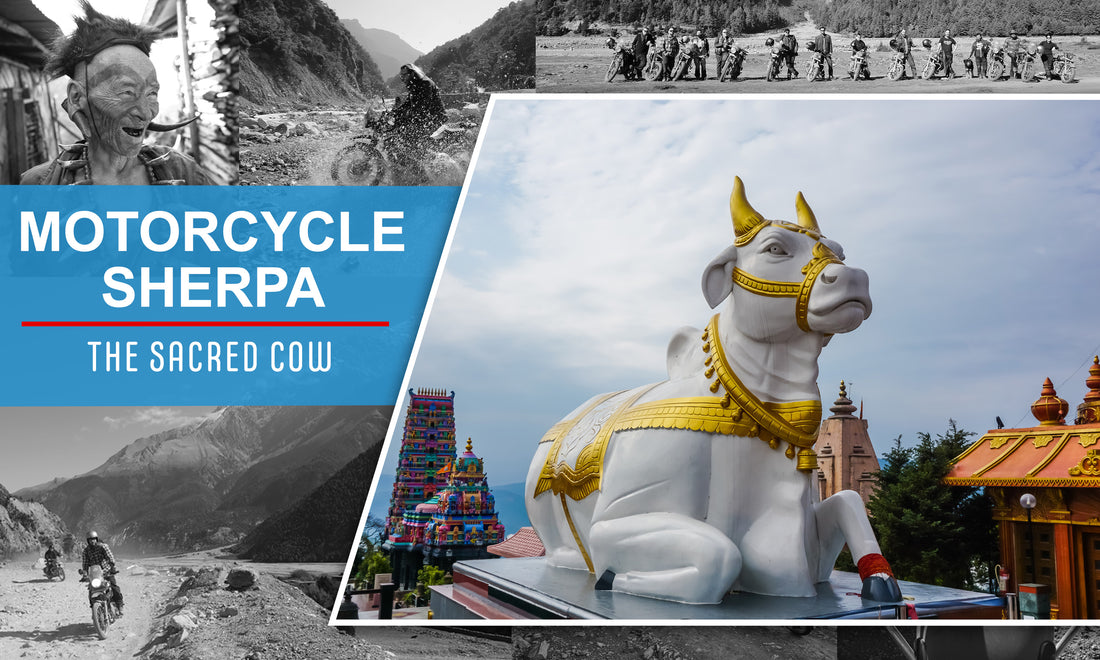India and Nepal, which are home to many of the world’s 900 million Hindus, share one very important belief: cows are sacred animals.
Why the Cow?
Hindus strongly believe that cows are a gift from the gods. After all, they’re the main source of milk, cheese, butter, fuel, cleanser, and more, all of which are important. These animals do more for people than any other animal, so Hindus consider them sacred.
Where It All Began
The veneration, or worship, of cows can be traced back to 2,000 B.C. and the Indo-European pastoralists. At the time, cattle were permitted to be sacrificed and the meat was eaten. However, it was forbidden to slaughter any milk-producing cows.
Since this time, cows have had close ties with religion and are often thought to represent some of the gods, including Shiva, Indra, and Krishna. Cow products, including butter, milk, curd, dung, and urine, were used in rituals for purification, healing, and even penance.
Hinduism and Cows
Cows, or rather cow products, play an important role in some aspects of the Hindu religion as well as in day-to-day life. Here are some ways cow products are used.
Ghee: A type of butter made from cow’s milk that has significantly more nutrients than other types of butter and provides vitamin C, D, A, and K. Certain sacrifices require ghee, which is impossible to make without cows.
Surrogacy: The Hindu religion also views cows as a sort of surrogate mother to people, as they provide people with milk throughout their lives.
Cow dung: It might seem gross, but cow dung actually has many uses, including as a disinfectant, as a mosquito repellent, instead of wood in furnaces, to prevent pimples, to clean teeth, and as fertilizer.
Cow urine: Hindus frequently use cow urine as a fertilizer, and it’s believed to help get rid of intestinal worms and help relieve certain abdominal diseases.
Lord Krishna
One of the major gods of the Hindu pantheon, Lord Krishna has a strong association with cows dating back more than 5,000 years. It’s said he once appeared as a herd of cows and is sometimes referred to as bala-gopala, or “the child who protects the cows.” Govinda, one of his holy names, means “one who brings satisfaction to the cows.”
Aditi
The mother of all the gods, her symbol is often the cow. This is fitting, as the cow represents selfless giving and nourishment.
Kamadhenu
Of course, there is also an actual cow goddess, believed to be the mother of all cows and a granter of wishes.
Lakshmi
Another important Hindu goddess, Lakshmi rules over wealth and fortune and is frequently associated with cows. In some areas, Hindus will create images of Lakshmi out of cow dung for worship.
A Day in the Life of a Hindu Cow
With more than 30% of the cattle in the world owned by Hindus, rest assured they are getting the best treatment. In India alone there are 26 distinct breeds.
Cattle are allowed to roam free, even in cities and towns, and are often hand-fed pieces of fruit or bread. Receiving a cow is one of the greatest gifts, and Indians and Nepalese take great pride in taking excellent care of their cows. In fact, there are more than 3,000 shelters across India dedicated to caring for elderly cows.
Hindus view cows as a living symbol of Mother Earth and sometimes decorate them with clothing, jewels, and even bright dyes.
In both India and Nepal, it’s either a sin or illegal to misuse, abuse, harm, or kill a cow. Cows are also frequent subjects of artwork, including paintings, drawings, sculptures, and statues.
Cows and Nepal
Nepalese worship cows during the festival of Gai Tihar, seeing the cows as incarnations of Lakshmi, the Hindu goddess of prosperity, fortune, and wealth. Cows are gifted garlands made from marigolds and offered food. During this time, the divine nature of the cow is venerated, and the people give thanks for all that cows provide.
Much like in India, cows are permitted to roam freely, which can sometimes create problems on the overcrowded streets. Teams of people will often try to gently lure and heard the cows to a field using fruit as a treat. Force is never used, so the process can take hours.
Cow: The National Animal of Nepal
In 2015, the Nepalese took their love of cows one step further, naming them Nepal’s national animal. This naming was part of the unveiling of the country’s new secular constitution. Cows are now protected under the constitution, and the slaughter of cows was banned.

